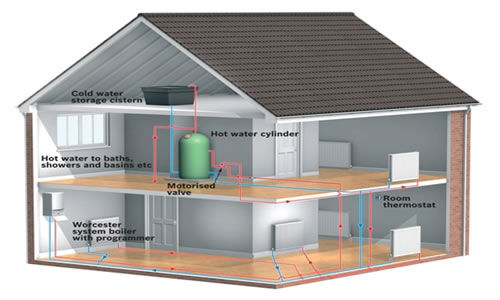What Is Inhibitor and Why Should It Be Used?
Updated: Jun 17

Using an inhibitor is a crucial component in maintaining a clean, healthy and efficient central heating system. It could mean the difference between a system that is both cost-effective and works efficiently, and one that leads to a broken boiler.
What Is Central Heating Inhibitor and What Does It Do?
An inhibitor is a chemical solution that prevents corrosion and limescale formation in central heating systems, as well as protection against microbiological contamination and installation debris.
This corrosion occurs when water comes into contact with the metal components found in a heating system. If left untreated, tiny pieces of rust will start to break off and settle at the bottom of pipes and radiators. Over time, as a result of mixing with other dirt and limescale in the system, a brown sludge will build up. This sludge will cause blockages, stopping water from freely circulating around the system - affecting its performance and causing it to work harder. This results in increased running costs for householders, a larger environmental footprint, and in worst-case scenarios, a complete system breakdown.
Using an inhibitor significantly reduces this rate of corrosion, and is, therefore, a critical way of ensuring that a central heating system continues to perform as it should, as well as supporting a boiler manufacturer’s warranty.
When Should an Inhibitor Be Added to a Central Heating System?
Part L of the Building Regulations stipulates that wet central heating systems should be cleaned, flushed and inhibited when installing a new boiler. Installers should refer to BS 7593:2019 for further guidance. The standard was introduced in May 2019 to provide clear guidance on the preparation, commissioning and maintenance of domestic central heating and cooling water systems.
To ensure the long-term protection of central heating systems, BS 7593:2019 also recommends an inhibitor’s concentration levels be checked (and if necessary reapplied) annually, as part of a boiler or system service. It advises that systems should be topped up with an inhibitor every five years – as a matter of course - or the quality of system water tested using a postal laboratory service or on-site test to ensure full protection against corrosion and scale
We’d also advise checking these levels if you’ve recently had a new radiator or towel rail installation, are experiencing a leak in your system or have radiators that are slow to heat up. If the system has been drained for any reason outside a service, an inhibitor should be added again.
How Should I Dose a System?
There are three ways you can dose an inhibitor. Once applied, you can leave it in the system.
1. Directly into a Radiator: Once you have turned the heating off, you should drain the whole heating system. You should then shut off the drain valve and radiator valves, unscrew the radiator bleed plug and attach the inhibitor dosing adaptor (or a suitable vessel, e.g., a funnel). Pour the inhibitor into the adaptor, retighten the bleed plug and turn the valves back on. You should also now bleed the radiator and afterwards, check the boiler pressure, repressuring it if it’s too low.
If you cannot apply the inhibitor directly into a radiator, there are two other ways, each dependent on what type of system your customer has.
2. Open Vented System: Once you have turned the water off, you should check the condition of the water tank and clean it if necessary. You should then add the inhibitor via the feed and expansion tank.

3. Sealed System: We’d firstly advise draining some water from the system, to allow enough space for the extra liquid. You should then add the inhibitor via the filling loop or an in-line system filter.








